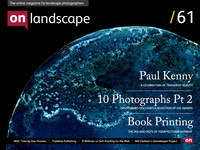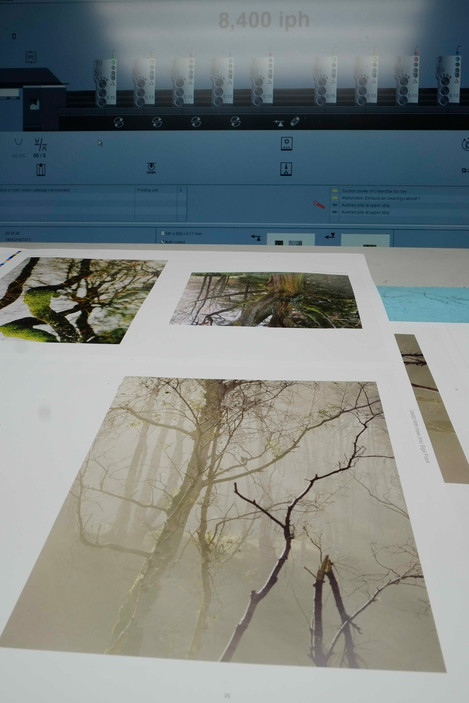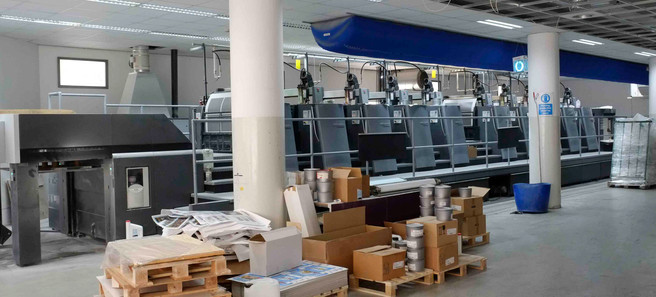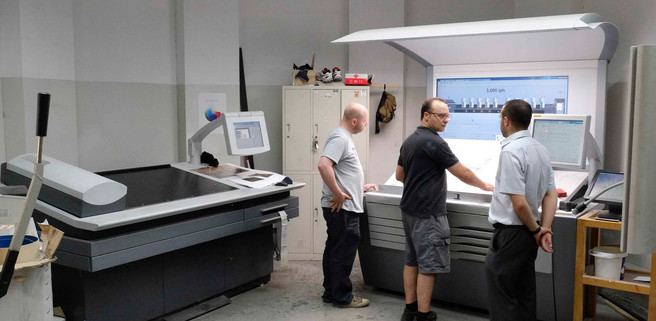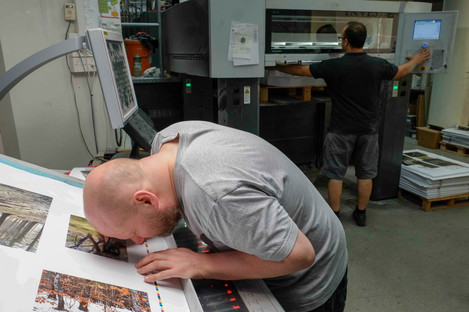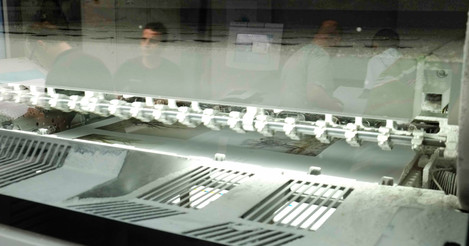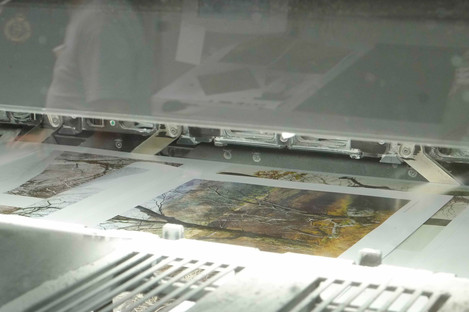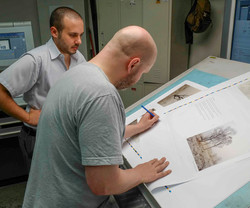A New Publishing Venture

Tim Parkin
Tim Parkin is a British landscape photographer, writer, and editor best known as the co-founder of On Landscape magazine, where he explores the art and practice of photographing the natural world. His work is thoughtful and carefully crafted, often focusing on subtle details and quiet moments in the landscape rather than dramatic vistas. Alongside his photography and writing, he co-founded the Natural Landscape Photography Awards, serves as a judge for other international competitions. Through all these projects, Parkin has become a respected and influential voice in contemporary landscape photography.

David Breen
We have recently seen the release of an inaugural book from large format photographer Dav Thomas - "With Trees" reviewed elsewhere in this issue. Dav is a friend of On Landscape, having written a few articles in the past, and also a friend of the editor, Tim Parkin. Dav mentions that he was cajoled into the book by the twitter community and credits David Breen, his publisher, as being the enabler of the book and Director of Triplekite Publishing.
We had a chat with David Breen and asked him a few questions about the project and future plans. We've included a few pictures from the first print run of Dav's book at the Gutenberg press in Malta.
Where has Triplekite Publishing come from and why was the business created?
Triplekite is a business I started a few years ago when I left my employment with Virgin. It was set up predominantly to deliver corporate development consultancy, which may seem to be a long way from book publishing. I would probably put down the venturing into book publishing to firstly, my collecting of "photo books" and secondly, as a reaction to the quality of some of the things I was buying. And probably in true Virgin style I had a moment when I thought to myself, I should just publish books then. That way I can diversify my business attentions a little and bring into reality the kinds of books I most enjoy at the quality I want them. Triplekite Publishing is therefore a fledgling business which is planned to sit alongside my core business.
Was there a catalyst which led you to this business model?
As with all these things it is often rarely one divining moment in time, however ordering 3 titles at the same time from the most famous digital, on demand, book site, certainly had a part in it. I was also having a number of book related conversations which all pointed to the scarcity of funding for landscape biased, photo titles. I can still recall the evening on twitter when I was casually watching Dav being berated, cajoled and brow beaten into a corner, as to whether he would produce a book or not. At some stage during it, I fired him a DM asking if it was something he had researched previously. At the time I thought that it would be an interesting intellectual exercise to do, which may lead to bringing a book into reality. On reflection it now seems an idealistic and beautifully naive thing to think, but we do indeed have a title, and it is currently in the British Library and that feels pretty good.
Along the way Dav & I have been discussing future projects and now have a loose but workable model for future titles.
What does Triplekite Publishing stand for and what is the goal?
The one word which springs to mind is quality, but its more than that, quality in the print process of course, but also in the design of every aspect. So we strive to create something which has great parts, but also collectively sits well as a total package. Its often too easy to accept the status quo as being the way things are done, to me that seems lazy, and if that was the case I probably wouldn't bother. The box is possibly the best example of my thinking, buy a book from anywhere in the world and 99% of them will arrive in a similar package which you will open, and without thought dispose of, hopefully into the recycling bin. I wanted to create packaging which would ask a question, do i throw this out, is this part of the product, do I keep it… has it worked? To do that does, of course, create some extra work, and we can improve I am sure.
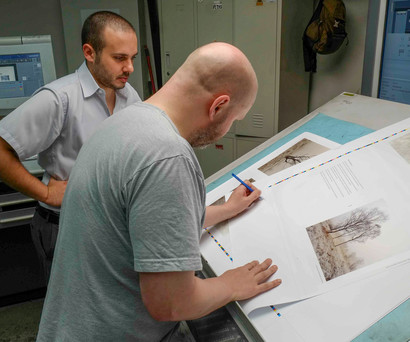 The other thing we stand for really strongly is non-compromise in decisions, based on profit reasons. Now I am not suggesting we are an altruistic organisation, we do need to make profit, but we don't bow to short termism. With "With Trees" we could have produced a lovely book with equally good print quality for approx. 20% less cost if we had made it 3cm smaller. We dismissed it within a very short phone call, it would have still been nice, but just not as good. If any real publishers ever read this they will probably think I am some kind of loony, but maybe I am just blessed with ignorance in the status quo of publishing.
The other thing we stand for really strongly is non-compromise in decisions, based on profit reasons. Now I am not suggesting we are an altruistic organisation, we do need to make profit, but we don't bow to short termism. With "With Trees" we could have produced a lovely book with equally good print quality for approx. 20% less cost if we had made it 3cm smaller. We dismissed it within a very short phone call, it would have still been nice, but just not as good. If any real publishers ever read this they will probably think I am some kind of loony, but maybe I am just blessed with ignorance in the status quo of publishing.
At the minute my goal for the future is to produce 2 or 3 titles per year with a leaning towards landscape photography in genre. Each book will be of a quality, or style, which is recognised as a high end "photo book". I am not saying that we won't move into more mainstream book production of instructional photo titles or similar at some stage.
How do you differ from a more traditional and established publishing house?
I am not too sure I can answer that in any level of detail as I don't know that much about the establishment. The biggest difference probably, is that we are not in the same business as them really, they publish titles which need to support multiple departments and that comes with proper plans and financial risk equations, production schedules and all that good stuff.
We are more of a facilitator of great book production, a collective approach, with a big difference in that we are prepared to put up the financial risk associated, we bet on our instinct. We handle everything from the choosing of artists to support, financing, design, retail and distribution. We have growth plans for sure, but we will never be a Taschen, at least I don't have it in a plan as yet.
Why would a photographer choose Triplekite Publishing over any other publisher?
As above I am not sure that they would. If an artist wanted a traditional, mainstream, mass distribution publisher, then they wouldn't choose Triplekite Publishing. If however they want a high quality, total package, beautifully presented, and made, book, then I think we may just be worth speaking to. They need to want to be involved closely, as our model is as much about the artist as it is about the product.
How did "With Trees" come about and what was it in Dav, that made you believe it would be a great book.
With Trees started as a twitter chat between many people, which resulted in Dav and I meeting in a hotel bar in Manchester. I had met him once before briefly in Surprise View area near Hathersage, and he had given me some great advice in my own film photography. During that short meeting in the bar we chatted and both pulled out numerous books we respected, debating them we seemed to have a lot of common ground in what we liked and wanted to do. The commercial conversation was very brief and at some point we agreed that we should try and do it, a shake of hands later and “With Trees” was conceived.
I tend to make decisions quickly and hold a lot of faith in the relationships that you hold within business. In Dav I saw many qualities I admired and none that felt like it would cause a problem during the project.
How long did the project take to bring into reality, what were the major events during the project.
Approximately 9 months form start to book arrival in UK. There were many events which are memorable, but that’s what you expect with doing something for the first time. There are 3 which really stand out for me.
1, the first time Dav uploaded the first draft to the dropbox we had for file sharing. I was expecting some roughed out draft which would have placeholder images, what I saw was nearly a finished book. Months later I realize we since changed it a lot, but I will always recall how happy and relieved that first draft made me feel.
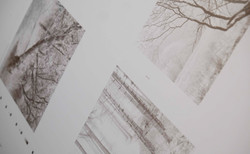 2. Finding a printer in Europe & then going on press and signing off on the final print sheets. We invested so much time and energy up to that point, it was wonderful to see that side of it. More importantly to feel so in control of the process, nothing was too much trouble to those master printers.
2. Finding a printer in Europe & then going on press and signing off on the final print sheets. We invested so much time and energy up to that point, it was wonderful to see that side of it. More importantly to feel so in control of the process, nothing was too much trouble to those master printers.
3.When the finished book arrived, despite having seen the finished printed sheet. I even had a complete set of sheets in my office, but nothing prepares you for the first time you see the finished article.
As you had never published a book before what made you think you could?
Working for Virgin gives you a level of “challenger brand” thinking, but also teaches you some hard and cold commercial disciplines. Rchard Branson himself is famous for saying “Screw it, Lets do it!” and that saying does resonate with me.
I believe I know when to engage and rely on others, and I am confident in my own judgement of people, to know who to trust, and also when to make a change which is necessary. There were a few times when something didn’t feel right, so I called and asked some people for an opinion. Sometimes I followed that view and sometimes I called someone else.
My bigger concern was not if I could publish a book or not, it was if I could publish a book which I would be proud of, be commercially successful, would lead to further things and bring joy to its buyers.
What do you think of your first published title?
I am very proud of it, I think we have done a good job at making a book which stands up against other books from vastly more experienced publishers. Ultimately if I was not the publisher I would buy this book and be pleased I did. I cannot say that about every book I have ever bought, and I have many.
What are your future plans?
Our plans are to publish more books going forwards. We are already in very early discussions with 4 photographers, of which there are some very well known names. For me it is about the artist, their involvement and the project itself. We are in no great hurry to get the next title into production, but when the right project presents itself we are equally ready to produce it quickly if need be.
How do you go about choosing which projects to invest in and produce?
There is no great science behind it as such. Firstly I need to believe its worth doing. I wish to create great “photo books” I am less interested in creating books purely for commercial reasons. Once I have a good feeling that it will stand alone as a beautiful book which can be packaged and have impact, then I have to think if it will sell. So of course commerciality does come into it.
So, how popular is the artist, how well known is the project, body of work & of course the artist. Is this something which will interest the press, does it have an exhibition planned, as I say there is no huge process behind this, it just needs to feel right, all things considered.
How much involvement in the book promotion are you expecting the photographers to do?
I think it is essential to the success of our model. The return is worth it, but I understand that it doesn’t come naturally to all. However people don’t buy a book because a certain publisher is involved, that’s maybe the starting point, a badge of quality or similar, but ultimately the book is about the artist or the work.
If someone was reading this and thinking of self publishing themselves, what advice would you give?
I would tell them to do it, it’s a fantastic and rewarding experience. Advice I am less likely to give, but if forced, it would be to understand what you are trying to create, price it correctly, and don’t spend your last penny expecting to make your fortune quickly.
Oh and have lots of storage space, and I means LOTS…

